GamesRadar+ Verdict
An unsatisfying mix of shallow strategy and low-energy shooting, Disintegration is hard to recommend to fans of either genre.
Pros
- +
Likeable characters
- +
Good voice work
Cons
- -
Sluggish shooting
- -
Shallow strategizing
- -
Tedious objectives
Why you can trust GamesRadar+
Disintegration doesn't feel like any of the things it's made from. It tries to blend real-time strategy and shooting, but it never gave me the satisfaction of pulling off a clever strategy, and its guns lack the weight, power, and feedback I look for in shooters. It's built around hoverbike-like Gravcycles that squad leaders ride into battle, but these control more like slow-moving turrets than actual bikes. It's set in a world where factions of "Natural" and "Integrated" (read: robot-ified) humans are at war, but its story is thin and meandering, constantly mentioning interesting themes but never exploring them. Disintegration's campaign is dull, tedious, and frustrating, and even the chaos of multiplayer can't liven up its boring combat.
You're dropped into Disintegration as protagonist Romer Shoal, a former Gravcycle pro and show host who's been Integrated into a robotic body. Romer joins a band of Integrated outlaws in their escape from the Cloud, a floating base commanded by the Rayonne and led by Lt. Col. Black Shuck. The Rayonne want to exterminate or Integrate all remaining Naturals, Romer and the gang would rather like to prevent that, and Black Shuck wants all their heads on a platter - or rather, their Brain Cans.
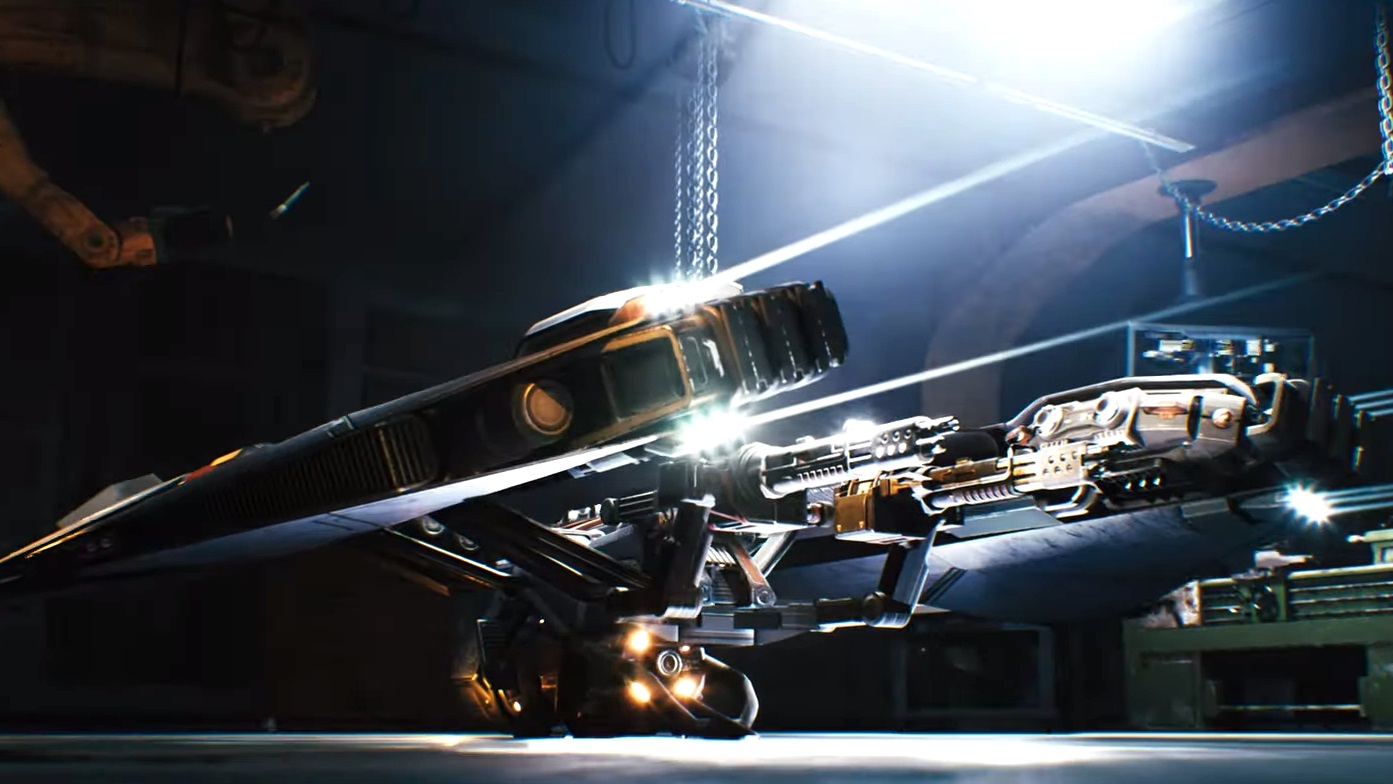
Release date: June 16, 2020
Platforms: PS4, Xbox One, PC
Developer: Private Division
Publisher: Take-Two Interactive
Its story is delivered in brief cutscenes and short, often one-sided conversations that never really go anywhere, but Disintegration does at least have some fun characters. Romer is a likeable smartass, the rest of his Outlaw friends play off each other well, and their Natural leader Waggoner is a wise and endearingly spunky old man. The bulk of the game is strangely understated thanks to an almost total lack of music - which I'm not convinced isn't a bug, and yes I checked my audio settings - but the cast does show signs of life. You don't spend much time with them - and the time you do consists of walking around empty hub areas between missions - but their personalities come through thanks to strong voice acting. Sadly, any goodwill I had for the characters was routinely snuffed out by their performance in combat, which is both maddeningly simple and bafflingly slow.
A literal strategy game
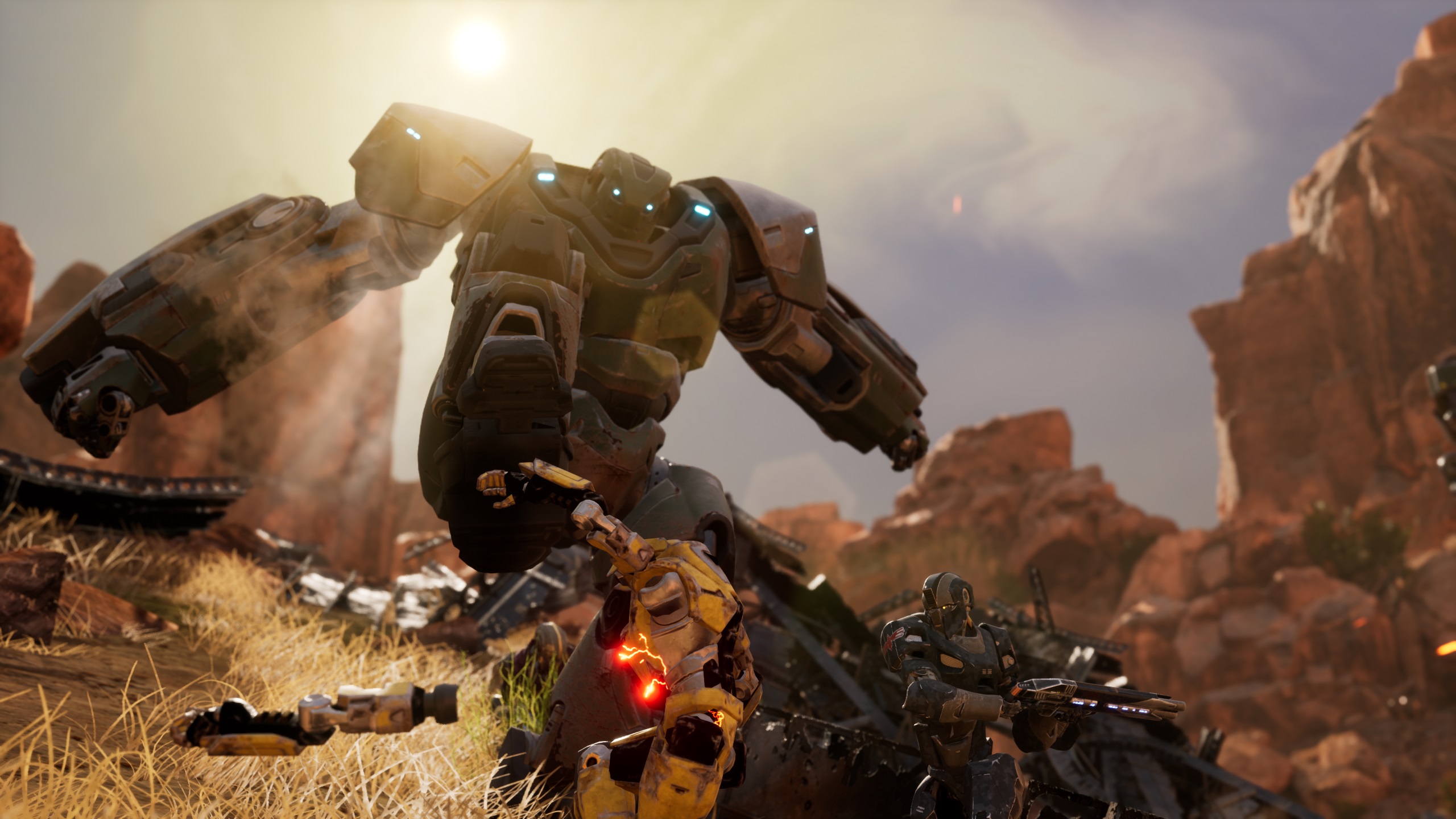
The campaign is split up into missions that come with locked loadouts for your Gravcycle and squad. You command anywhere from zero to four units at a time, and your Gravcycle has two weapons or gadgets - usually a gun and a healing option, or sometimes a gun and rechargeable missiles. You can't customize any of this, mind; you can only upgrade basic stats and Make Numbers Bigger by slapping upgrade chips onto preset options.
The loadout you're given in each mission feels like a total crapshoot. I felt appropriately armed in some missions, but as an example, the final mission offers what I'd consider the weakest possible Gravcycle kit. I would've liked more freedom to tailor my arsenal, especially because there is only one real strategy in the entire campaign: Area of Effect (AoE) attacks.
There are more abilities in the multiplayer, but there are only four in the missions, and all of them are some form of AoE. You've got a small AoE that stuns, a big AoE that slows, a medium AoE that does big damage, and another large AoE that does medium damage. As a result, my only strategy was to throw all my cooldowns at groups of dudes or, occasionally, one big dude. Sure, I can choose how to distribute my abilities around the battlefield, but that's the extent of my thinking: do I want to put this AoE here or over there?

That's not what I would consider a strategy. It's purely reactive, and it doesn't take enemy or terrain differences into account. But it's all I can do with the functionally identical tools at my disposal. There are no meaningful defensive or proactive abilities, no buffs or debuffs, no ambush options, no traps, no diversions - just AoE attacks that deal damage, or set up for attacks that deal damage.
You also can't command your units individually; they can only act as a group, meaning your low-health sniper and high-health tank will sidle up to enemies with exactly the same bravado. You can tell your squad to move to a specific area, attack one enemy until it dies, wait at a set location, follow you and act as they see fit, or interact with a specific object (usually to open a gate or disable a buzzkill weapons jammer). But there are two caveats here. The command radius is pretty short, so you can only send your squad so far ahead. And if you tell them to wait somewhere but you then move too far away - which is not very far at all, really - they'll automatically follow you.
Your squad's abilities are as unreliable as they are unexciting
Because your squad's behavior is all over the place, when you tell them to lob abilities at areas or enemies, there's often a small but critical delay between your command and the ability going off. This is more than enough time for your AoE setup to turn into a wasted strike on a single enemy that has now split from the group. In other words, your squad's abilities are as unreliable as they are unexciting, so frankly I didn't care much when my units idly walked into obvious trip mines for the umpteenth time. You can revive them infinitely and it only takes like 10 seconds, so frankly their deaths aren't much of a concern. If anything, corpse-running is the optimal approach.
Now, this last gripe is a small complaint compared to all that, but it's a recurring one that drove me mad. If you want your squad to open containers full of valuable upgrade materials, you have to watch them slowly plod around and pry boxes open for minutes at a time. I eventually gave up on collecting these things entirely because it's just that tedious. Why can't I just shoot a box and take the loot? Why do I need some special robot lockpick to sort through a pile of scrap when it's right in front of me and my squad is a mile away wasting a valuable missile cooldown on a single trash mob with 4% health which I accidentally targeted because it blends in with the rest of the samey enemies and bland environments? Why?
This… is Gravcycling?
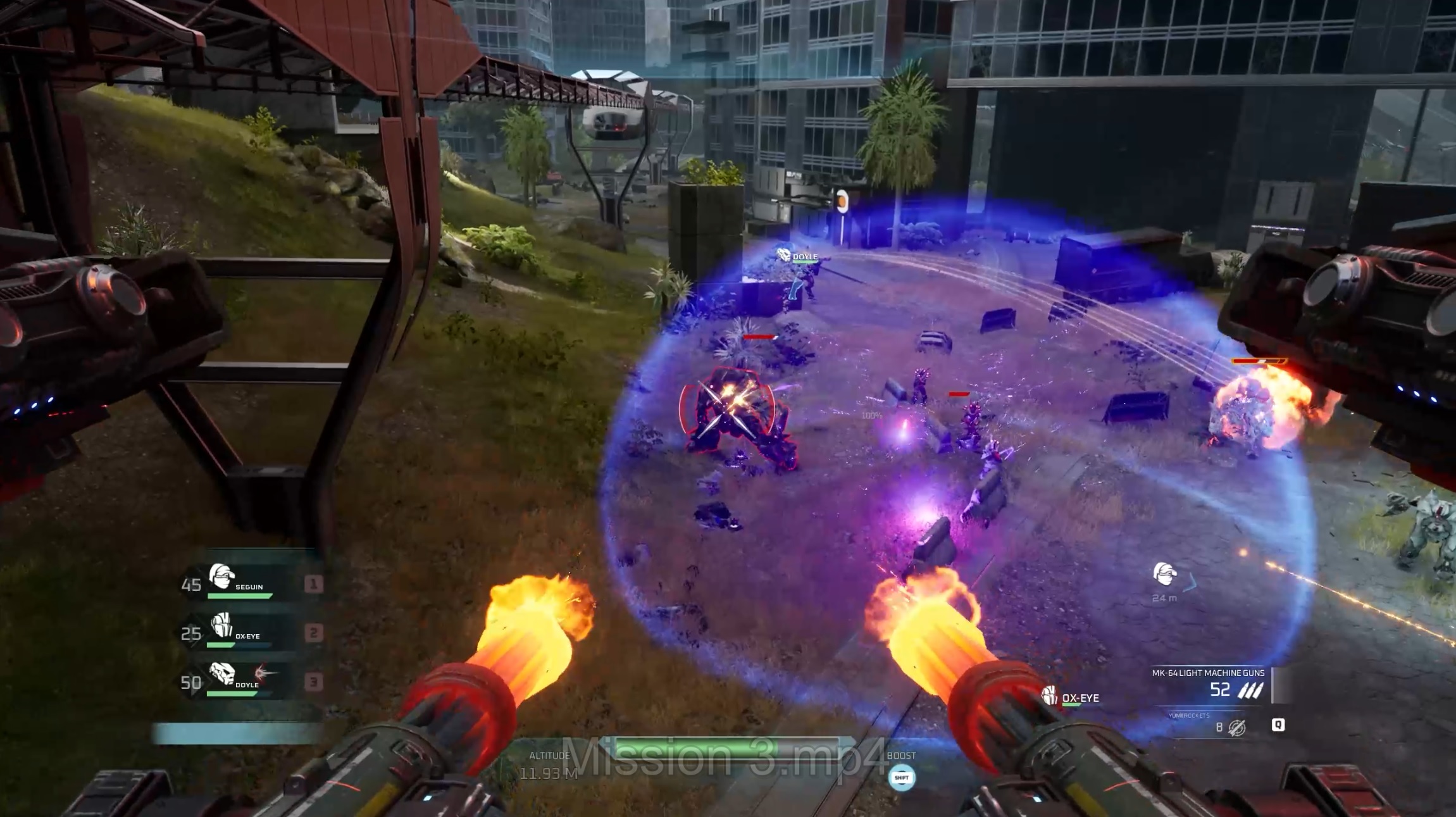
That's the extent of the strategic side of things, and when you're not wrapped up in that, you're shooting enemies from atop your Gravcycle. Disintegration reminds me of Sanctum and Starhawk in that it makes you an active participant in a normally passive strategy game type. It's not enough to command your squad; you also have to shoot enemies yourself - picking off high-value targets, hitting enemies from behind to stun them, or finishing off low-health ankle-biters. Racing around a battlefield on a hoverbike with twin guns blazing might sound fun, but in practice, Disintegration feels like the humdrum turret sections in every PS3-era action game. Only instead of a fixed turret, you're now on a mobile turret but with the parking brake on.
Your Gravcycle is miserably, inexplicably sluggish. There's no way to upgrade its speed, and the paltry boost function does very little to alleviate this. I realize that there may be balance concerns with regards to evading enemy projectiles, but this is a hoverbike we're talking about. When I flip the ignition on a hoverbike, put the accelerator to the floor, and my immediate reaction is, "I could get out and run faster than this", something has gone wrong.
Using your mounted guns is equally unsatisfying. Apart from one marksman rifle, your weapons are either full-auto bullet hoses or fire some sort of explosive payload. None of them are very fun to use, in large part because you only use them from afar. It's suicide to get close to anything in Disintegration, as your squad repeatedly demonstrates, so you spend all your time wearing enemies down at a distance. I know what shooting robots feels like, and it is not this. This feels like knocking down tin cans with a slingshot from 20 meters out. Likewise, the only true boss fight in the game is just you and another Gravcycle rider spraying bullets at each other while slowly swaying back and forth. It doesn't feel like a mid-air dogfight; it feels like a rail shooter with extra steps.
Better with more players but not by much
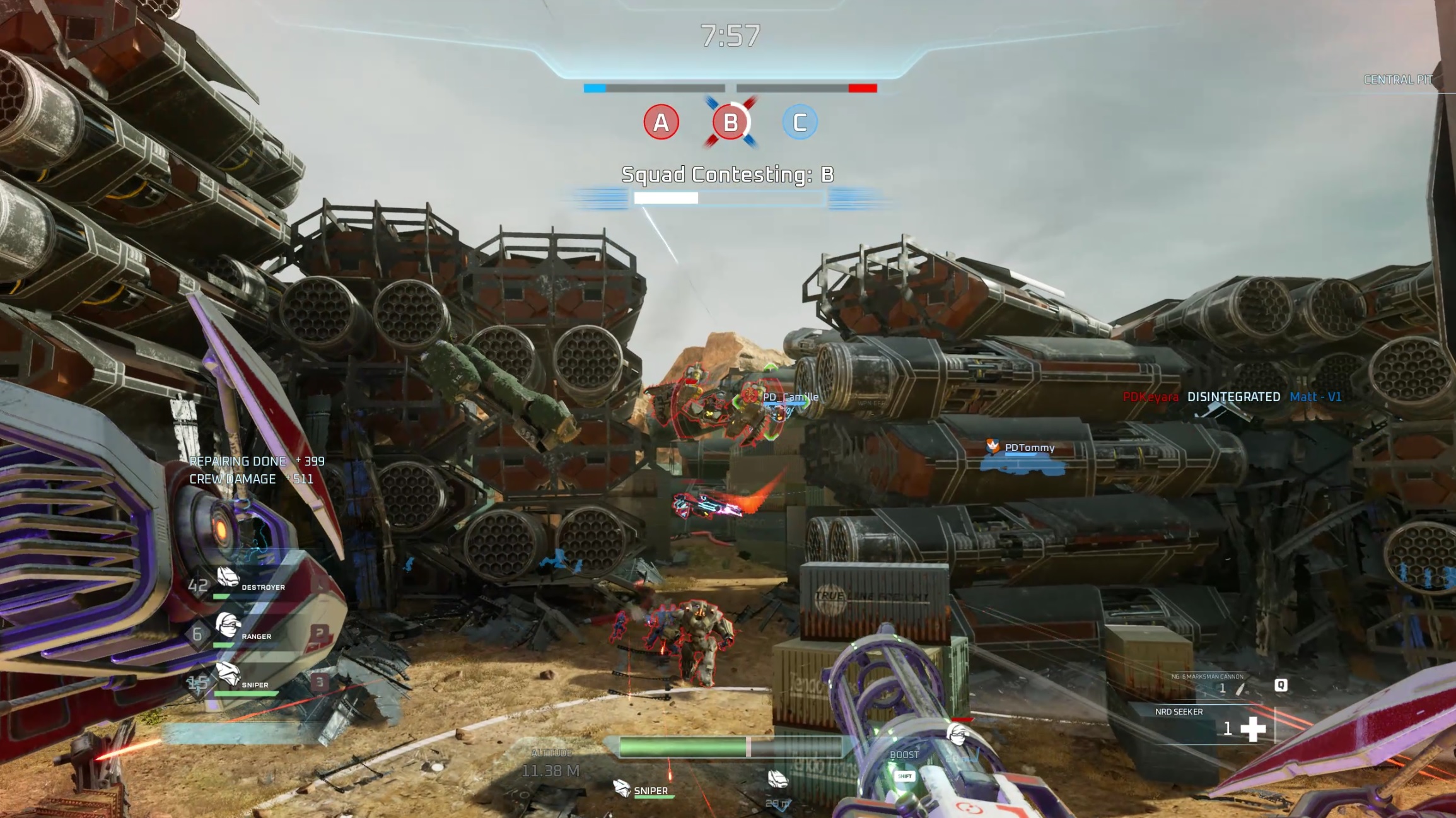
After the 10-hour campaign, I was able to play Disintegration's multiplayer for several hours through scheduled pre-release sessions. I did find it to be more fun than the campaign, but only because it trades endless tedium for uninterpretable chaos.
There are three modes, all of them 5v5 and all riffs on established modes: Retrieval (Capture the Flag), Collector (Kill Confirmed), and Zone Control (King of the Hill). I queued for variety matchmaking, but most of my games were Retrieval, which has a slight twist in that your squad units have to carry the flag while you escort them to the objective. The flag carrier gets a big defence boost so they don't get instantly annihilated by enemy Gravcycles, and you want to keep your units alive anyway so that you have access to their abilities in team fights.
While there are a few more guns and squad abilities in multiplayer, the new loadouts don't add much to combat. They're also tied to locked presets, with each one representing a specific Gravcycle gang, but at least you get some choice of what to use. You can swap loadouts when you die, but I quickly settled on the gang with a marksman rifle and healing shot and never looked back. Oh, and you can change your helmet, tweak your Gravcycle's color, and attach fuzzy dice or other silly cosmetics, but that's about all I saw in the way of customization.
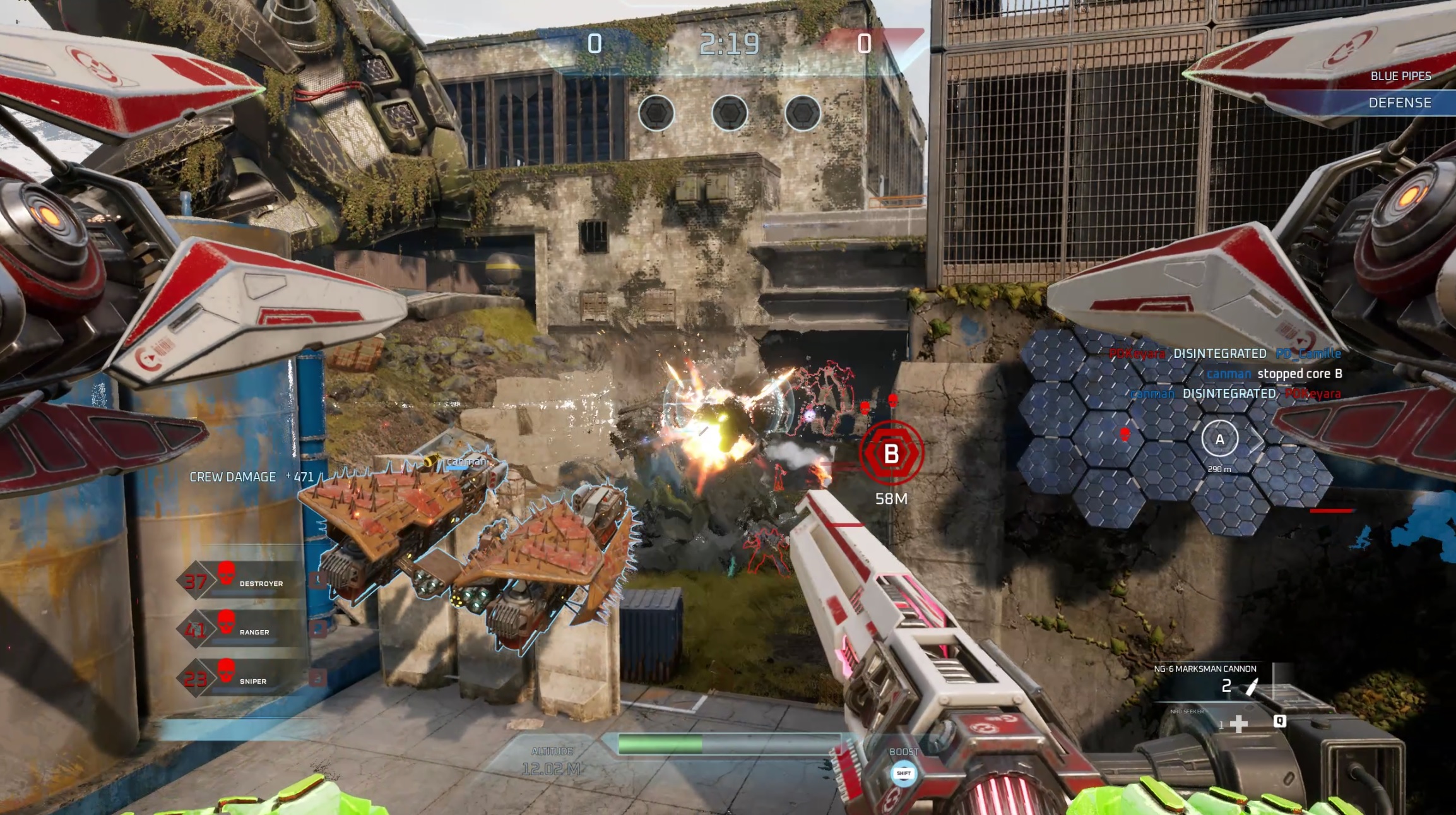
Several issues with the campaign - namely slow movement and unreliable abilities - carry over into the multiplayer, but my main complaint is harder to put a point on. Basically, no matter what I do in matches, I feel stupid. Maps are weirdly small and claustrophobic, so I constantly bump into walls and other Gravcycles. And whenever we all gather for a team fight or a final push on an objective, we just kind of hover around looking dopy, like a low-gravity traffic jam. I was top of the board in most of my matches, so I was doing something right, but I honestly couldn't tell you what - perhaps spamming cooldowns a bit harder than everyone else. Everything's just a bit of a hectic mess, though I do prefer it to the campaign.
I have no idea who I'd recommend Disintegration to. It feels too shallow for strategy fans and too flimsy for shooter fans. If there is a group of people who really liked the turret section in Binary Domain and thought it would be improved by the addition of pet robots and another 10 hours, maybe they could extract some amount of fun from Disintegration. Unfortunately, I could not.
Reviewed on PC.

Austin has been a game journalist for 12 years, having freelanced for the likes of PC Gamer, Eurogamer, IGN, Sports Illustrated, and more while finishing his journalism degree. He's been with GamesRadar+ since 2019. They've yet to realize his position is a cover for his career-spanning Destiny column, and he's kept the ruse going with a lot of news and the occasional feature, all while playing as many roguelikes as possible.



